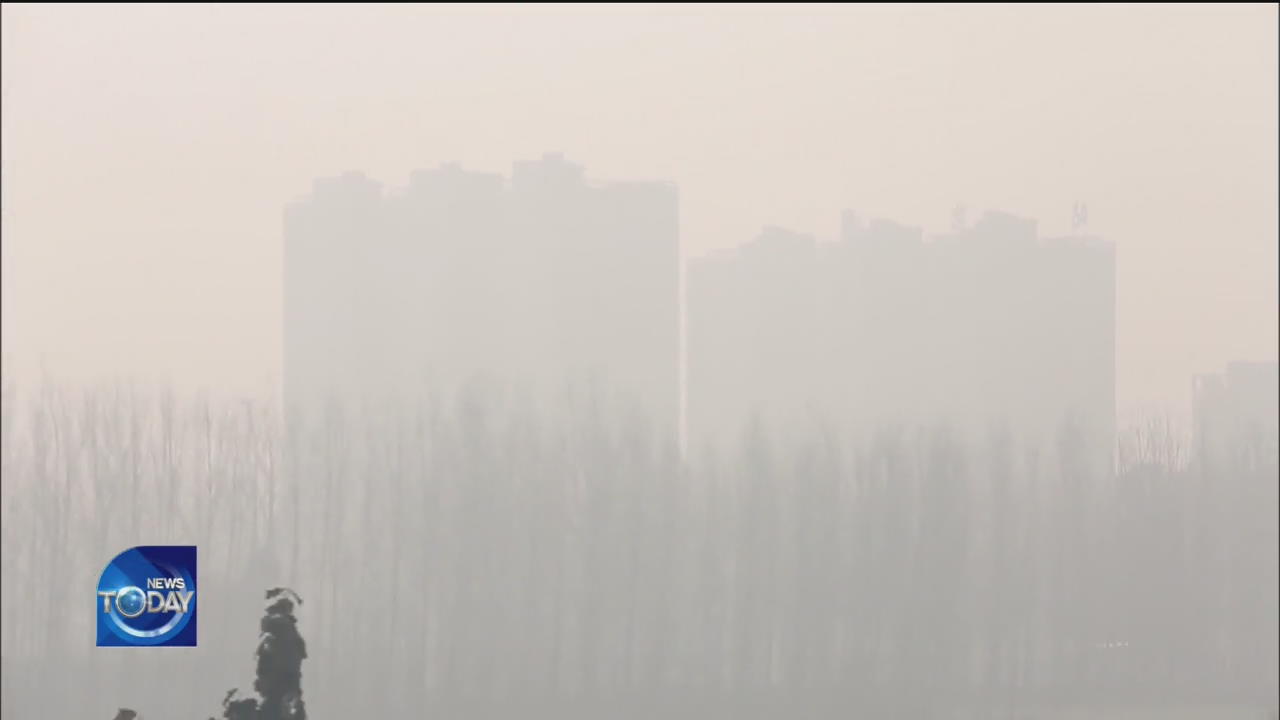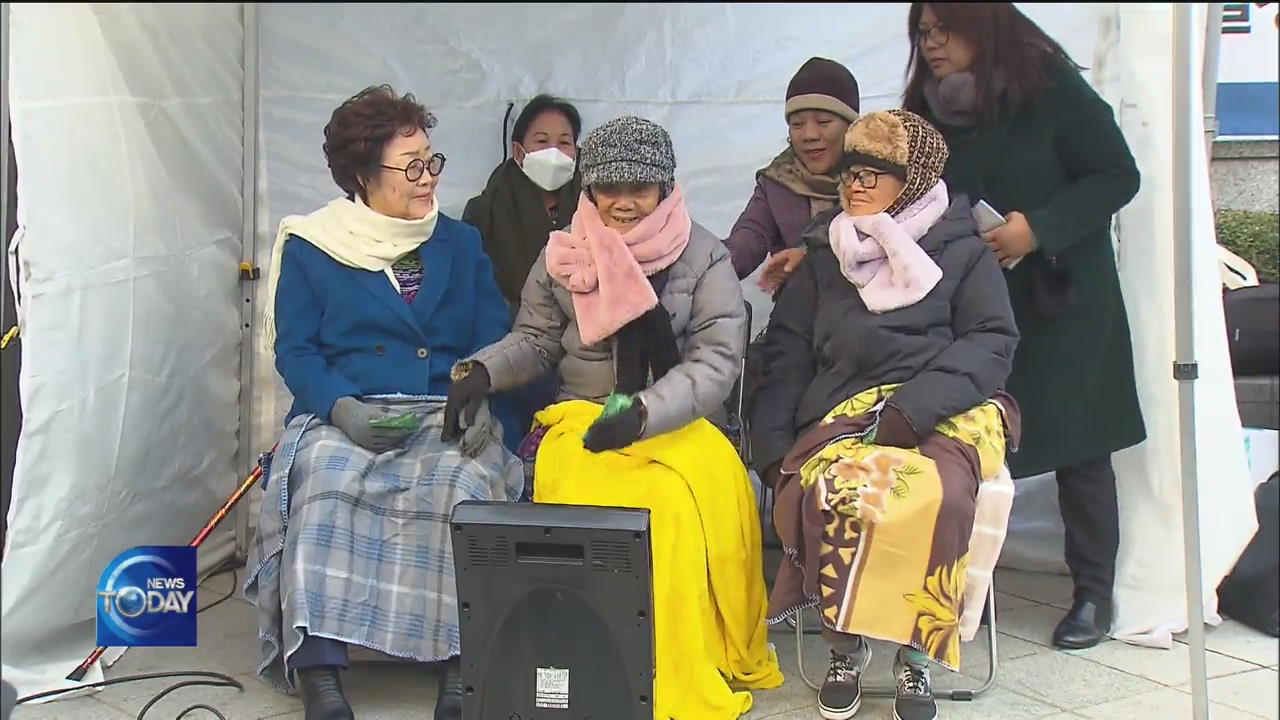JOINT STUDY ON ORIGIN OF ULTRA-FINE DUST
입력 2019.11.21 (15:05)
수정 2019.11.21 (16:45)
읽어주기 기능은 크롬기반의
브라우저에서만 사용하실 수 있습니다.
[Anchor Lead]
Air pollution remains a serious environmental issue in Korea. A joint study conducted by South Korea, China and Japan has found that about one-third of ultra-fine dust in Korea originates from China. The results of the study have been published by the governments of the three countries for the first time.
[Pkg]
The results of a study in which China for the first time acknowledged that it produces microdust have been announced. The results were published in a report on a joint study conducted by South Korea, China and Japan to investigate air pollution in Northeast Asia. The study found that as of 2017, 51 percent of microdust in Korea was produced domestically, 32 percent originated from China, and the remaining amount came from North Korea. South Korean and Japanese researchers agreed that China accounts for 35 percent of fine dust, whereas their Chinese counterparts claimed that only 26 percent of dust originated from China.
[Soundbite] CHANG YUN-SEOK(DIRECTOR, NATIONAL INSTITUTE OF ENVIRONMENTAL RESEARCH) : "The differences in findings caused by different models and techniques is acceptable for scientists."
The results of the study were initially scheduled to be announced last year, but the announcement was scrapped because of China's opposition. China demanded that the results be re-evaluated based on the latest data. However, the study revealed again that a significant amount of fine dust originates from China. The results announced by Korean researchers using the latest data were only 6 percentage points lower than those based on data from ten years ago. The study revealed that although China's emissions of conventional pollutants such as sulfur oxide have declined notably, nitrogen oxide emissions, typically found in industrialized countries, recorded only a slight decrease.
[Soundbite] WOO JUNG-HYUN(PROF., KONKUK UNIVERSITY(PARTICIPATED IN JOINT STUDY)) : "An analysis of China's emissions shows that they contain similar chemicals as emissions produced in Korea and Japan."
Experts are calling for stronger measures from Korea, China and Japan, as nitrogen oxide emissions, mostly produced by cars and power plants, are harder to cut.
Air pollution remains a serious environmental issue in Korea. A joint study conducted by South Korea, China and Japan has found that about one-third of ultra-fine dust in Korea originates from China. The results of the study have been published by the governments of the three countries for the first time.
[Pkg]
The results of a study in which China for the first time acknowledged that it produces microdust have been announced. The results were published in a report on a joint study conducted by South Korea, China and Japan to investigate air pollution in Northeast Asia. The study found that as of 2017, 51 percent of microdust in Korea was produced domestically, 32 percent originated from China, and the remaining amount came from North Korea. South Korean and Japanese researchers agreed that China accounts for 35 percent of fine dust, whereas their Chinese counterparts claimed that only 26 percent of dust originated from China.
[Soundbite] CHANG YUN-SEOK(DIRECTOR, NATIONAL INSTITUTE OF ENVIRONMENTAL RESEARCH) : "The differences in findings caused by different models and techniques is acceptable for scientists."
The results of the study were initially scheduled to be announced last year, but the announcement was scrapped because of China's opposition. China demanded that the results be re-evaluated based on the latest data. However, the study revealed again that a significant amount of fine dust originates from China. The results announced by Korean researchers using the latest data were only 6 percentage points lower than those based on data from ten years ago. The study revealed that although China's emissions of conventional pollutants such as sulfur oxide have declined notably, nitrogen oxide emissions, typically found in industrialized countries, recorded only a slight decrease.
[Soundbite] WOO JUNG-HYUN(PROF., KONKUK UNIVERSITY(PARTICIPATED IN JOINT STUDY)) : "An analysis of China's emissions shows that they contain similar chemicals as emissions produced in Korea and Japan."
Experts are calling for stronger measures from Korea, China and Japan, as nitrogen oxide emissions, mostly produced by cars and power plants, are harder to cut.
■ 제보하기
▷ 카카오톡 : 'KBS제보' 검색, 채널 추가
▷ 전화 : 02-781-1234, 4444
▷ 이메일 : kbs1234@kbs.co.kr
▷ 유튜브, 네이버, 카카오에서도 KBS뉴스를 구독해주세요!
- JOINT STUDY ON ORIGIN OF ULTRA-FINE DUST
-
- 입력 2019-11-21 14:59:38
- 수정2019-11-21 16:45:55

[Anchor Lead]
Air pollution remains a serious environmental issue in Korea. A joint study conducted by South Korea, China and Japan has found that about one-third of ultra-fine dust in Korea originates from China. The results of the study have been published by the governments of the three countries for the first time.
[Pkg]
The results of a study in which China for the first time acknowledged that it produces microdust have been announced. The results were published in a report on a joint study conducted by South Korea, China and Japan to investigate air pollution in Northeast Asia. The study found that as of 2017, 51 percent of microdust in Korea was produced domestically, 32 percent originated from China, and the remaining amount came from North Korea. South Korean and Japanese researchers agreed that China accounts for 35 percent of fine dust, whereas their Chinese counterparts claimed that only 26 percent of dust originated from China.
[Soundbite] CHANG YUN-SEOK(DIRECTOR, NATIONAL INSTITUTE OF ENVIRONMENTAL RESEARCH) : "The differences in findings caused by different models and techniques is acceptable for scientists."
The results of the study were initially scheduled to be announced last year, but the announcement was scrapped because of China's opposition. China demanded that the results be re-evaluated based on the latest data. However, the study revealed again that a significant amount of fine dust originates from China. The results announced by Korean researchers using the latest data were only 6 percentage points lower than those based on data from ten years ago. The study revealed that although China's emissions of conventional pollutants such as sulfur oxide have declined notably, nitrogen oxide emissions, typically found in industrialized countries, recorded only a slight decrease.
[Soundbite] WOO JUNG-HYUN(PROF., KONKUK UNIVERSITY(PARTICIPATED IN JOINT STUDY)) : "An analysis of China's emissions shows that they contain similar chemicals as emissions produced in Korea and Japan."
Experts are calling for stronger measures from Korea, China and Japan, as nitrogen oxide emissions, mostly produced by cars and power plants, are harder to cut.
Air pollution remains a serious environmental issue in Korea. A joint study conducted by South Korea, China and Japan has found that about one-third of ultra-fine dust in Korea originates from China. The results of the study have been published by the governments of the three countries for the first time.
[Pkg]
The results of a study in which China for the first time acknowledged that it produces microdust have been announced. The results were published in a report on a joint study conducted by South Korea, China and Japan to investigate air pollution in Northeast Asia. The study found that as of 2017, 51 percent of microdust in Korea was produced domestically, 32 percent originated from China, and the remaining amount came from North Korea. South Korean and Japanese researchers agreed that China accounts for 35 percent of fine dust, whereas their Chinese counterparts claimed that only 26 percent of dust originated from China.
[Soundbite] CHANG YUN-SEOK(DIRECTOR, NATIONAL INSTITUTE OF ENVIRONMENTAL RESEARCH) : "The differences in findings caused by different models and techniques is acceptable for scientists."
The results of the study were initially scheduled to be announced last year, but the announcement was scrapped because of China's opposition. China demanded that the results be re-evaluated based on the latest data. However, the study revealed again that a significant amount of fine dust originates from China. The results announced by Korean researchers using the latest data were only 6 percentage points lower than those based on data from ten years ago. The study revealed that although China's emissions of conventional pollutants such as sulfur oxide have declined notably, nitrogen oxide emissions, typically found in industrialized countries, recorded only a slight decrease.
[Soundbite] WOO JUNG-HYUN(PROF., KONKUK UNIVERSITY(PARTICIPATED IN JOINT STUDY)) : "An analysis of China's emissions shows that they contain similar chemicals as emissions produced in Korea and Japan."
Experts are calling for stronger measures from Korea, China and Japan, as nitrogen oxide emissions, mostly produced by cars and power plants, are harder to cut.
이 기사가 좋으셨다면
-
좋아요
0
-
응원해요
0
-
후속 원해요
0

















이 기사에 대한 의견을 남겨주세요.